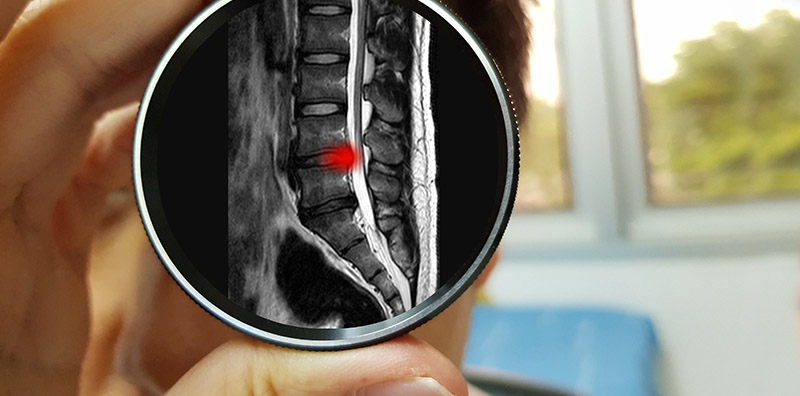Slipped Disc?
Physiotherapy Treatment for Disc Injuries
Disc injuries account for a large percentage of back and neck problems. They can result in back or neck pain, which usually interferes with sitting or bending. Some disc injuries result in pressure on local nerves which can result in e.g., sciatic pain in the leg, or arm symptoms such as pain, tingling, numbness or weakness. Most disc injuries resolve with time and appropriate management, and only occasionally require surgery.

MORE ABOUT DISCS
Vertebral discs are like cushions which sit between your vertebrae (the building blocks which make up your spine). Discs have two layers, a tough fibrous outer layer, and a more fluid inner layer: like thick putty. Part of this inner layer (nucleus pulposus) can escape through a tear in the outer layer. Or in some instances, the outer layer (annulus fibrosus) can split or bulge. The disc doesn’t actually “slip”. Nor can it be “put back in”. The resultant inflammation and pain need time and appropriate management to settle. Your physiotherapist can assist.
WHAT ARE TYPICAL SYMPTOMS?
The main reason disc injuries are problematic (apart from being a source of back pain) is because of their proximity to the spinal cord and the nerves which travel down the arm (from the neck) and the leg (lower back). If you have a disc injury, it may be compressing a neighbouring nerve root and giving the symptoms of pain, weakness, pins and needles or numbness in the limb.
WHAT ARE THE DIFFERENT DISC INJURIES?
Sometimes the term “slipped disc” is used to describe a disc injury. However, the disc doesn’t actually “slip”. Nor can it be “put back in”. Part of the nucleus can escape through a weakening in the outer layer. This is known as a herniation.
The three classifications of a herniated disc are protrusion, extrusion and sequestration. If a large herniated disc breaks off in the spinal canal, it is known as a disc sequestration. In some instances, the outer layer can split (an annular tear) or the disc may bulge, which implies pressure from within the disc on the annulus, without a disc rupture.
HOW DID IT HAPPEN?
Disc injuries often occur suddenly, due to trauma associated with lifting or straining. The combination of forward bending with twisting may result in disc injury as it is most vulnerable in this position. Sitting also puts the most strain on the disc of all static postures.
HOW DOES PHYSIOTHERAPY HELP?
Most disc injuries settle without surgery, given the time and opportunity. The major role of the physiotherapist is to advise and educate patients on avoiding bending and sitting while waiting for the disc injury to heal.
Some hands-on techniques help, and more importantly, settling inflammation using ice, possibly medications and ultrasound, rest and taping or a brace for the back. Core or other exercises may be given, along with education regarding your sitting posture/lifting technique.
If the symptoms do not settle as quickly as expected, a scan may be ordered and/or a medical specialist opinion sought. In some cases surgery is required to relieve the pressure of the offending disc on the nearby nerve.
At Macquarie Street Physiotherapy, we have years of experience dealing with disc injuries. We will assist you with recovery, and direct you back to your doctor if things are not progressing adequately. Once you have recovered from the acute injury, we will help with strategies to avoid re-injuring your back or neck.








